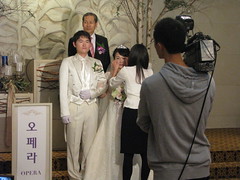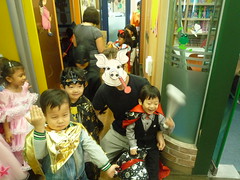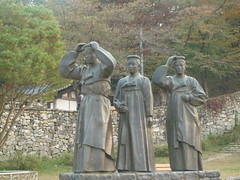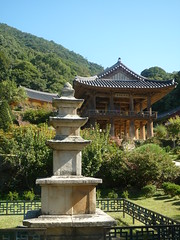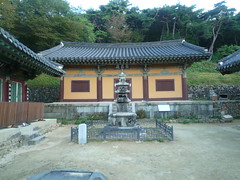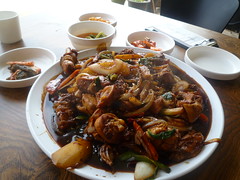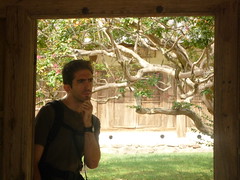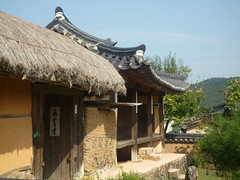One of my coworkers, Hana, got married and was kind enough to invite the office to her
wedding. Korean weddings are... different. They are assembly line affairs, where the same wedding is performed with slight differences for numerous couples. They take place in wedding halls, which are pretty much the same across Korea so that
everyone's wedding can be pretty much the same. It begins as the guests enter the lobby and see the bride on display in a small room. We take turns getting our picture taken with her. When the previous ceremony ends, the guests from that wedding go on to the next station and we all entered the main hall. As with many Korean activities, weddings are not about the experience at the time but about thoroughly documenting the event for future
reference and enjoyment. Thus the
'videographer' stood (in his oh-so-professional gray sweater) between the guests and the podium for the entire event. The ceremony itself had a cute
slide show of pictures of the couple, a candle lighting ceremony with the parents (one candle had to be replaced since it wouldn't light, to the amusement of those of us who are a bit irreverent), the bride's father walking her up to be given away, a recital of vows (which no one felt like live translating for us, so I have no idea what was said), and a proof of strength and virility by the groom (in this case getting down and doing some
push ups in his nice white tux). Then there were many pictures: pictures of the bride and groom, pictures of the bride and groom plus parents, pictures of the couple with their entire families, and finally pictures of them with friends (including us). Thus concluded the Western-style part of the wedding.
Next was the Korean style wedding, which took place in a small room downstairs and was really just for the groom's parents, though a few of us were able to
squeeze into the viewing space to look over the
videographer's shoulder. The couple was dressed as Korean royalty and knelt before a feast table across from the groom's parents. At some point the parents threw coins into a cloth that the couple held. Then the married couple bowed to their elders. I'm afraid I missed the rest of the symbolism. After that was a buffet with all kinds of food from Korea and the West. Some people (especially
teenaged relatives) seemed to have largely shown up for the banquet at the bride's father's expense. Finally, once the bride and groom changed back into their western clothes and had a chance to eat a bit, they drove off the assembly line in one of the several decorated cars.
The whole affair reinforced my feeling that most ceremonies--like weddings,
funerals, and graduations--aren't really for the people in them but for their family and friends, and this goes double in Korea.
